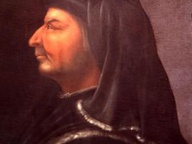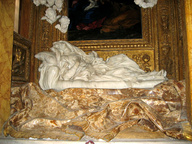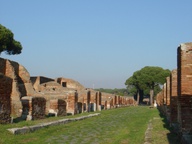Sandro Cabrini. Archetypes of dream: dance
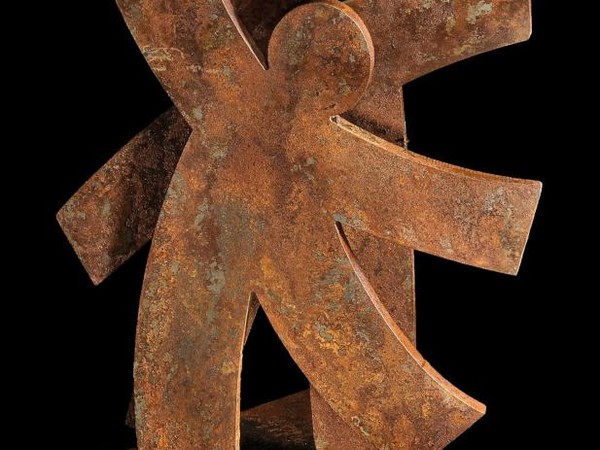
Sandro Cabrini Dance, 2013, ferro arrugginito, cm 51x10x23
From 08 Ottobre 2015 to 08 Novembre 2015
Florence
Place: Museo Marcello Tommasi già Atelier di Benvenuto Cellini
Address: via della Pergola 57
Times: Tuesday - Saturday from 3pm to 7pm
Telefono per informazioni: +39 055 3860357
E-Mail info: info@etraeventsfirenze.it
A journey between reality and dream told by humanized cutouts - emblematic forms typical of Sandro Cabrini's art - is the topic of the anthological exhibition “Archetipi del sogno: la danza/Archetypes of dream: dance”, open to the public from 8 October to 8 November at the “Marcello Tommasi Museum formerly Atelier of Benvenuto Cellini”.
The exhibition, that unfolds in the rooms of the Museum and its front garden, hosts a group of 40 works, made from 1970 to today, among which there are sculptures, installations, works on paper and on canvas, videos and several never seen before pieces.
The file rouge/common theme that connects these works is the form of a stickman, made with simple and linear traits, which is a constant presence rendered using different techniques and materials: from sculptures made using iron or wood to paper works or works on canvas.
The sculptures Dance and Dance in the ballroom of 2013, made with rusty iron, highlight the theme of the exhibition, which is 'dance', through figures evoking a harmonious movement in an indefinite space. Similar scenarios are presented again on collages on Indian cotton rag paper, like Moon and Garden of 2012, where the several stickmen figures, floating and made with primary colours, stand out on the paper, thus creating a strong visual impact and taking the viewer to a cocoon-like environment, like in a dream.
Very delicate but also strong are the works made in 2015, paper bas-reliefs, Masquerade, Chorus, Backstage, that once again portray stick figures inserted in dynamic choreographies.
The originality of Sandro Cabrini's work is in its conveying of multiple meanings and reflections, from the repetition of a form - by itself or in a group, static or dancing -, which takes on a poetic, mysterious, reassuring and ironic form.
It is an extremely simple way of expression, which at the same time encloses reflections on man, on his relationship with the surrounding world, on human society and its moods.
The artist's poetics is clearly summed up in the critic text by Maurizio Vanni, who says: “Cabrini is not interested in interpreting his own clear surreal visions, but in the complete freedom of expression he is after those flows of energy that, together with imagination and a personal humour, involve the spectator in a willing process of knowledge and self-awareness. In front of his bas-relief structures and his installations, it is possible to lose direction in daily life, and begin to daydream in strangely possible worlds”.
A catalogue accompanies the exhibition, with critical texts and the reproduction of works that retrace the artistic career of Sandro Cabrini.
Sandro Cabrini was born in Milan in 1948; he graduated at the Arts High School of Brera and in 1975 got a degree in Architecture at the Polytechnic University of Milan. From 1968 he dedicated himself to painting and the creation of a special form of symbolic expression. Between 1995 and 2000 he travelled several times to the USA and England, and at the same time was invited to teach at the IULM University of Milan, where he went in-depth into themes like the alphabetic writing and symbols. In 2009 he was invited to St. Petersburg to do a Master Class on his activity as a painter. During his artistic career he took part in solo and group exhibitions in Italy (Milan, Turin, Orvieto, Lucca, Genoa, Grosseto, Pordenone) and abroad (Chicago, Houston, St. Petersburg, Geneve, New York, Miami, Seoul, Hong Kong, Shanghai).
Some of his works are permanently on display at: the City Collection of drawing in Salò, Circolo Macchi Hospital in Varese, the Park of Sculptures at Idroscalo in Milan with a sculpture made for the Expo, the Yeoung Museum of Contemporary Art - Gwang-Ju of Seoul, South Korea, and the Chang Lian in Shanghai, China. www.sandrocabrini.com
The exhibition, that unfolds in the rooms of the Museum and its front garden, hosts a group of 40 works, made from 1970 to today, among which there are sculptures, installations, works on paper and on canvas, videos and several never seen before pieces.
The file rouge/common theme that connects these works is the form of a stickman, made with simple and linear traits, which is a constant presence rendered using different techniques and materials: from sculptures made using iron or wood to paper works or works on canvas.
The sculptures Dance and Dance in the ballroom of 2013, made with rusty iron, highlight the theme of the exhibition, which is 'dance', through figures evoking a harmonious movement in an indefinite space. Similar scenarios are presented again on collages on Indian cotton rag paper, like Moon and Garden of 2012, where the several stickmen figures, floating and made with primary colours, stand out on the paper, thus creating a strong visual impact and taking the viewer to a cocoon-like environment, like in a dream.
Very delicate but also strong are the works made in 2015, paper bas-reliefs, Masquerade, Chorus, Backstage, that once again portray stick figures inserted in dynamic choreographies.
The originality of Sandro Cabrini's work is in its conveying of multiple meanings and reflections, from the repetition of a form - by itself or in a group, static or dancing -, which takes on a poetic, mysterious, reassuring and ironic form.
It is an extremely simple way of expression, which at the same time encloses reflections on man, on his relationship with the surrounding world, on human society and its moods.
The artist's poetics is clearly summed up in the critic text by Maurizio Vanni, who says: “Cabrini is not interested in interpreting his own clear surreal visions, but in the complete freedom of expression he is after those flows of energy that, together with imagination and a personal humour, involve the spectator in a willing process of knowledge and self-awareness. In front of his bas-relief structures and his installations, it is possible to lose direction in daily life, and begin to daydream in strangely possible worlds”.
A catalogue accompanies the exhibition, with critical texts and the reproduction of works that retrace the artistic career of Sandro Cabrini.
Sandro Cabrini was born in Milan in 1948; he graduated at the Arts High School of Brera and in 1975 got a degree in Architecture at the Polytechnic University of Milan. From 1968 he dedicated himself to painting and the creation of a special form of symbolic expression. Between 1995 and 2000 he travelled several times to the USA and England, and at the same time was invited to teach at the IULM University of Milan, where he went in-depth into themes like the alphabetic writing and symbols. In 2009 he was invited to St. Petersburg to do a Master Class on his activity as a painter. During his artistic career he took part in solo and group exhibitions in Italy (Milan, Turin, Orvieto, Lucca, Genoa, Grosseto, Pordenone) and abroad (Chicago, Houston, St. Petersburg, Geneve, New York, Miami, Seoul, Hong Kong, Shanghai).
Some of his works are permanently on display at: the City Collection of drawing in Salò, Circolo Macchi Hospital in Varese, the Park of Sculptures at Idroscalo in Milan with a sculpture made for the Expo, the Yeoung Museum of Contemporary Art - Gwang-Ju of Seoul, South Korea, and the Chang Lian in Shanghai, China. www.sandrocabrini.com
SCARICA IL COMUNICATO IN PDF
COMMENTI

-
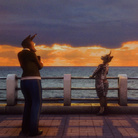 Dal 31 ottobre 2024 al 24 febbraio 2025
Milano | Fondazione Prada
Dal 31 ottobre 2024 al 24 febbraio 2025
Milano | Fondazione Prada
-
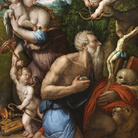 Dal 31 ottobre 2024 al 02 febbraio 2025
Arezzo | Galleria d’Arte Contemporanea / Sala Sant’Ignazio
Dal 31 ottobre 2024 al 02 febbraio 2025
Arezzo | Galleria d’Arte Contemporanea / Sala Sant’Ignazio
-
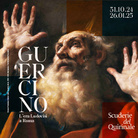 Dal 31 ottobre 2024 al 26 gennaio 2025
Roma | Scuderie del Quirinale
Dal 31 ottobre 2024 al 26 gennaio 2025
Roma | Scuderie del Quirinale
-
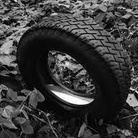 Dal 01 novembre 2024 al 15 febbraio 2025
Torino | PAV - Parco Arte Vivente
Dal 01 novembre 2024 al 15 febbraio 2025
Torino | PAV - Parco Arte Vivente
-
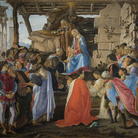 Dal 29 ottobre 2024 al 02 febbraio 2025
Milano | Museo Diocesano Carlo Maria Martini
Dal 29 ottobre 2024 al 02 febbraio 2025
Milano | Museo Diocesano Carlo Maria Martini
-
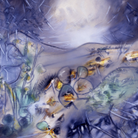 Dal 25 ottobre 2024 al 23 marzo 2025
Venezia | Ca’ Pesaro – Galleria Internazionale d’Arte Moderna
Dal 25 ottobre 2024 al 23 marzo 2025
Venezia | Ca’ Pesaro – Galleria Internazionale d’Arte Moderna

